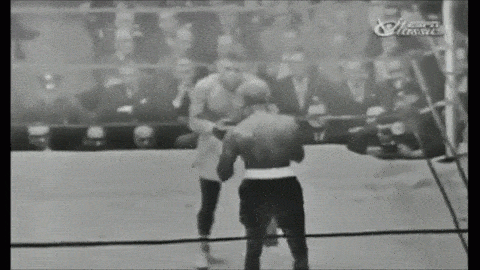 Judicial-estoppel issues often surface when a debtor a seeks to assert a claim and dispute arises about the adequacy of the debtor’s disclosures about that claim. Wal-Mart Stores, Inc. v. Parker involved a debtors personal-injury claim, and the Fifth Circuit concluded: “After declining to apply judicial estoppel and thus allowing Parker to proceed with his personal injury suit against Wal-Mart, the bankruptcy court ordered Parker to turn over any recovery to the Chapter 13 trustee to be administered for the benefit of creditors. In cases similar to Wal-Mart’s—when a potential defendant argues that a debtor is estopped from bringing a lawsuit for failure to disclose it to the bankruptcy court—we have held that, while a debtor may be estopped from pursuing the claim on his own behalf, his bankruptcy trustee is not similarly estopped and may pursue the claim for the benefit of the creditors.” No. 18-30378 (Jan. 8, 2020). “Though the bankruptcy court’s decision is certainly odd and not the route we would have chosen, we cannot say that it contained clearly erroneous factual findings or the application of incorrect legal standards that amount to an abuse of discretion.”
Judicial-estoppel issues often surface when a debtor a seeks to assert a claim and dispute arises about the adequacy of the debtor’s disclosures about that claim. Wal-Mart Stores, Inc. v. Parker involved a debtors personal-injury claim, and the Fifth Circuit concluded: “After declining to apply judicial estoppel and thus allowing Parker to proceed with his personal injury suit against Wal-Mart, the bankruptcy court ordered Parker to turn over any recovery to the Chapter 13 trustee to be administered for the benefit of creditors. In cases similar to Wal-Mart’s—when a potential defendant argues that a debtor is estopped from bringing a lawsuit for failure to disclose it to the bankruptcy court—we have held that, while a debtor may be estopped from pursuing the claim on his own behalf, his bankruptcy trustee is not similarly estopped and may pursue the claim for the benefit of the creditors.” No. 18-30378 (Jan. 8, 2020). “Though the bankruptcy court’s decision is certainly odd and not the route we would have chosen, we cannot say that it contained clearly erroneous factual findings or the application of incorrect legal standards that amount to an abuse of discretion.”
Category Archives: Judicial Estoppel
A defendant adjusted its arguments about appropriate overtime calculation in light of the trial court’s rulings; the Fifth Circuit found no invited error, waiver, or judicial estoppel. As to judicial estoppel in particular, the Court observed: “In arguing for the comparator model, Saybolt never conceded that the FWW plaintiffs were paid based on a 40-hour workweek or were owed overtime at one and one-half times the “regular rate.” There was thus no inconsistency. Nor did the district court accept Saybolt’s initial position as is required for judicial estoppel. Indeed, the court rejected the comparator model by requiring that incentive payments be included in the “regular rate” calculation. This is why Saybolt fell back on the alternative argument that, since incentive payments must be included, the FWW method should be used to calculate the plaintiffs’ damages.” Dacar v. Saybolt LP. No. 16-20751 (Oct. 18, 2018). A brief opinion on rehearing clarified the scope of the opinion.
defendant adjusted its arguments about appropriate overtime calculation in light of the trial court’s rulings; the Fifth Circuit found no invited error, waiver, or judicial estoppel. As to judicial estoppel in particular, the Court observed: “In arguing for the comparator model, Saybolt never conceded that the FWW plaintiffs were paid based on a 40-hour workweek or were owed overtime at one and one-half times the “regular rate.” There was thus no inconsistency. Nor did the district court accept Saybolt’s initial position as is required for judicial estoppel. Indeed, the court rejected the comparator model by requiring that incentive payments be included in the “regular rate” calculation. This is why Saybolt fell back on the alternative argument that, since incentive payments must be included, the FWW method should be used to calculate the plaintiffs’ damages.” Dacar v. Saybolt LP. No. 16-20751 (Oct. 18, 2018). A brief opinion on rehearing clarified the scope of the opinion.
 An element of judicial estoppel is that “a court accepted the prior position” that is inconsistent with a party’s position in the case at hand. In Fornesa v. Fifth Third Mortgage Co., a bankruptcy debtor’s failure to amend his financial schedules satisfied that requirement, as “the bankruptcy court . . . implicitly accepted the representation by operating as though [Debtor’s] financial status were unchanged. ‘Had the court been aware . . . it may well have altered the plan.'” No. 17-20324 (July 27, 2018).
An element of judicial estoppel is that “a court accepted the prior position” that is inconsistent with a party’s position in the case at hand. In Fornesa v. Fifth Third Mortgage Co., a bankruptcy debtor’s failure to amend his financial schedules satisfied that requirement, as “the bankruptcy court . . . implicitly accepted the representation by operating as though [Debtor’s] financial status were unchanged. ‘Had the court been aware . . . it may well have altered the plan.'” No. 17-20324 (July 27, 2018).
 The plaintiffs in Firefighters’ Retirement System v. Grant Thornton LLP alleged that Grant Thornton waived its right to insist on presuit review of the claims by a review panel, as ordinarily required by Louisiana law. The Fifth Circuit rejected this argument, finding:
The plaintiffs in Firefighters’ Retirement System v. Grant Thornton LLP alleged that Grant Thornton waived its right to insist on presuit review of the claims by a review panel, as ordinarily required by Louisiana law. The Fifth Circuit rejected this argument, finding:
- Judicial estoppel did not apply to an allegedly inconsistent litigation position by Grant Thornton when the district court did not accept it (notably, stating the elements of the doctrine in a way that does not require the statement to have been made in a different proceeding), and
- Grant Thornton did not waive this requirement, distinguishing (and criticizing) a Louisiana appellate opinion on the issue, and noting that the litigation had been stayed for a lengthy period such that GT had not yet even filed an answer.
Accordingly, the court affirmed the dismissal of plaintiffs’ claims because of preemption. No. 17-30274 (July 3, 2018).
 In ASARCO LLC v. Montana Resources, Inc., a case involving the interplay of a business’s bankruptcy with a later lawsuit for breach of contract by that business, the Fifth Circuit observed:
In ASARCO LLC v. Montana Resources, Inc., a case involving the interplay of a business’s bankruptcy with a later lawsuit for breach of contract by that business, the Fifth Circuit observed:
- “[A] declaratory claim on its own typically will not preclude future claims involving the same circumstances (as noted, issue preclusion may still apply to any declaration the court issues). But in a case involving both declaratory claims and ones seeking coercive relief, the former will not serve as an antidote that undoes the preclusive force that traditional claims would ordinarily have.” (applying the “seminal case” on the point, Kaspar Wire Works, Inc. v. Leco Engineering & Machine, Inc., 575 F.2d 530 (5th Cir. 1978))
- As to the damages claim, “ASARCO’s claim for failure to reinstate did not accrue until MRI rejected the tender in 2011. . . . ASARCO may or may not have attempted to cure, and MRI may or may not have denied ASARCO’s reinstatement. Because the present breach of contract claim was contingent on future events, ASARCO could not have brought it during the adversary proceeding.”
- For the same reasons, the plaintiff was not judicially estopped by allegedly inadequate disclosures during the earlier bankruptcy: “MRI cites no case requiring a party to disclose a potential claim for breach of contract when the contract had not yet been breached. This makes sense, because MRI’s position would require a debtor to scour its contracts looking for hypothetical claims that another party could maybe breach in the future.”
No. 16-40682 (June 2, 2017).
 Reviewing the requirements for the application of judicial estoppel, the Fifth Circuit reversed the resolution of a case about insurance coverage of attorneys fees in Aldous v. Darwin Nat’l Assurance Co., No. 16-10537 (March 16, 2017). The Court found that the district court misapplied judicial estoppel when it “unjustifiably read the [key] supplemental declaration in isolation,” and made several “small antecedent errors” leading up to that ruling, including its reading of the relevant earlier decision.
Reviewing the requirements for the application of judicial estoppel, the Fifth Circuit reversed the resolution of a case about insurance coverage of attorneys fees in Aldous v. Darwin Nat’l Assurance Co., No. 16-10537 (March 16, 2017). The Court found that the district court misapplied judicial estoppel when it “unjustifiably read the [key] supplemental declaration in isolation,” and made several “small antecedent errors” leading up to that ruling, including its reading of the relevant earlier decision.
 The parties to McCloskey v. McCloskey disputed whether a debt was non-dischargeable as a child support obligation. Rejecting the application of the somewhat protean doctrine of judicial estoppel, the Fifth Circuit held: “Bankruptcy courts must ‘look beyond the labels which state courts—and even parties themselves—give obligations which debtors seek to discharge.’ A party may argue in bankruptcy
The parties to McCloskey v. McCloskey disputed whether a debt was non-dischargeable as a child support obligation. Rejecting the application of the somewhat protean doctrine of judicial estoppel, the Fifth Circuit held: “Bankruptcy courts must ‘look beyond the labels which state courts—and even parties themselves—give obligations which debtors seek to discharge.’ A party may argue in bankruptcy  court that an obligation constitutes support even if she has urged to the contrary in state court. Therefore, appellees are not judicially estopped from bringing this claim.” No. 16-20079 (Oct. 31, 2016, unpublished). (Compare the recent case of Galaz v. Katona, which applied judicial estoppel in a bankruptcy case based on inconsistent statements made in earlier state court litigation about ownership interests. No. 15-50919 (Oct. 28, 2016, unpublished).
court that an obligation constitutes support even if she has urged to the contrary in state court. Therefore, appellees are not judicially estopped from bringing this claim.” No. 16-20079 (Oct. 31, 2016, unpublished). (Compare the recent case of Galaz v. Katona, which applied judicial estoppel in a bankruptcy case based on inconsistent statements made in earlier state court litigation about ownership interests. No. 15-50919 (Oct. 28, 2016, unpublished).
 The Allens filed for Chapter 13 bankruptcy protection; during the pendency of that case, they sued Mrs. Allen’s employer for injuries allegedly suffered in the workplace. The Fifth Circuit affirmed summary judgment for the employer, finding the three elements of judicial estoppel satisfied by the Allens’ failure to disclose the personal injury suit in the bankruptcy – (1) inconsistent positions, (2) one of which was accepted by a court, and (3) lack of inadvertence by the Allens. The Court also found that the overall balance of equities weighed against the Allens, given the importance of full disclosure to the bankruptcy process. The Court modified the judgment to be without prejudice so the Allens’ trustee could pursue the suit if he or she so desired (although acknowledging potential limitations issues). Allen v. C&H Distributors, Inc., No. 15-30330 (Dec. 23, 2015). The opinion is of broad interest because of its detailed analysis of judicial estoppel under the general three-part test, rather than a more truncated version sometimes employed in bankruptcy cases.
The Allens filed for Chapter 13 bankruptcy protection; during the pendency of that case, they sued Mrs. Allen’s employer for injuries allegedly suffered in the workplace. The Fifth Circuit affirmed summary judgment for the employer, finding the three elements of judicial estoppel satisfied by the Allens’ failure to disclose the personal injury suit in the bankruptcy – (1) inconsistent positions, (2) one of which was accepted by a court, and (3) lack of inadvertence by the Allens. The Court also found that the overall balance of equities weighed against the Allens, given the importance of full disclosure to the bankruptcy process. The Court modified the judgment to be without prejudice so the Allens’ trustee could pursue the suit if he or she so desired (although acknowledging potential limitations issues). Allen v. C&H Distributors, Inc., No. 15-30330 (Dec. 23, 2015). The opinion is of broad interest because of its detailed analysis of judicial estoppel under the general three-part test, rather than a more truncated version sometimes employed in bankruptcy cases.
A barge accident caused a large oil spill in the Mississippi River. In the first lawsuit about the incident, the district court placed liability solely on the tugboat operator, noting the (valid and enforceable) charter agreement between it and the barge owner. In a later case, the barge owner contended that the agreements were void ab initio because the tugboat operator entered without intent to perform. Gabarick v. Laurin Maritime (America) Inc., No. 13-30739 (May 21, 2014). The Fifth Circuit agreed that the new position was barred by judicial estoppel. Key to its analysis was that while the barge owner’s positions were in the alternative in the first action, which would not create estoppel: “Once a court has accepted and relied upon one of a party’s several alternative positions, any argument inconsistent with that position may be subject to judicial estoppel in subsequent proceedings.” The Court also concluded that the district court’s decision to stay the second case so the first could proceed did not compel an argument choice in that case that would make the application of judicial estoppel inequitable.
In long-running litigation and arbitration about alleged environmental contamination in Ecuador, Chevron obtained discovery from U.S. courts several times under 28 U.S.C. § 1782 on the basis that a “foreign or international tribunal” was involved. Republic of Ecuador v. Connor, No. 12-20122 (Feb. 13, 2013). Chevron then successfully resisted a § 1782 application on the ground that the arbitration was not an “international tribunal.” The Fifth Circuit applied judicial estoppel and reversed, asking: “Why shouldn’t sauce for Chevron’s goose be sauce for the Ecuador gander as well? The Court dismissed a jurisdictional issue by characterizing § 1782 as a grant of administrative authority. It then rejected Chevron’s arguments that judicial estoppel could not apply to legal issues and that reliance by earlier courts on Chevron’s position had not been shown. The opinion reminds that: “Because judicial estoppel is an equitable doctrine, courts may apply it flexibly to achieve substantial justice.” (quoting Reed v. City of Arlington, 650 F.3d 571 (5th Cir. 2011) (en banc), and citing New Hampshire v. Maine, 532 U.S. 752 (2001)). (The “goose-and-gander” saying traces to an early collection of English proverbs.)
After reviewing the application of judicial estoppel in the bankruptcy context as to a debtor’s claim in Love v. Tyson Foods, 677 F.3d 258 (5th Cir. 2012), the Court applied the doctrine to a creditor’s claim in Wells Fargo v. Oparaji, No. 11-20871 (Oct. 5, 2012). After carefully reviewing the elements of that doctrine in this circuit, the Court found that Wells did not adopt “plainly inconsistent position[s]” in the debtor’s two bankruptcies, observing that a creditor is not required to include all accrued liability in every revised proof of claim. The Court also found that the debtor’s failure to follow the plan in his first bankruptcy barred him from now invoking the equitable remedy of judicial estoppel based on those proceedings.
The defendant in Love v. Tyson Foods complained that an employee’s wrongful discharge claim was barred by judicial estoppel because it was not properly disclosed in the employee’s personal bankruptcy, and the Court agreed, rejecting the employee’s contention that the disclosure issues were inadvertent. No. 10-60106 (April 4, 2012). The Court provided a thorough summary of how the Fifth Circuit defines the judicial estoppel doctrine, reminding that because the doctrine protects the judicial system rather than litigants, detrimental reliance is not ordinarily an element. A detailed dissent criticized the majority for how it addressed the burden of proof and for how it applied the doctrine in the context of broader bankruptcy policies, noting earlier Circuit authority in the area.
The Fifth Circuit has had a about the application of Daubert, and its effect on the roles of judge and jury. In Huffman v. Union Pacific Railroad, the Court moved to the other end of the technical spectrum, and analyzed the sufficiency of evidence in a FELA case about a former railway worker’s alleged on-the-job injuries. No. 09-40736 (March 13, 2012) After thorough analysis of the worker’s allegations, the Court held that expert testimony on causation was not necessary to support a jury finding for the worker, but found that the worker had not presented enough evidence about the type of injury to satisfy even that standard. Op. at 21-22. Judge Southwick wrote for the majority, joined by Judge Owen, and Judge Dennis dissented. The case analyzes FELA precedent but is of substantially broader interest on general causation issues. The Court also briefly analyzed and rejected a judicial estoppel argument. Op. at 7-8.